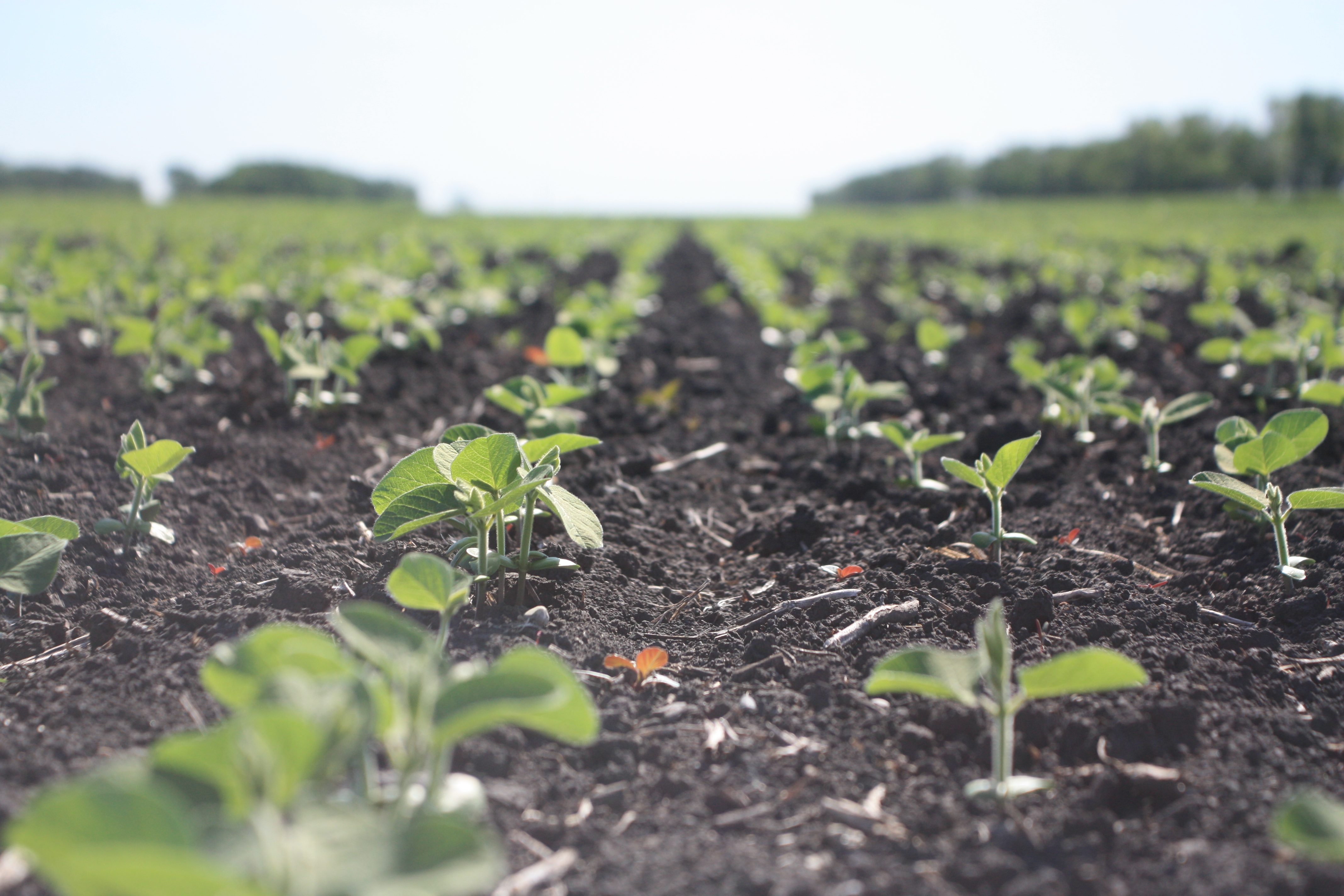Lorne Grieger, Prairie Agricultural Machinery Institute
A RECENT PAMI study has produced results of particular interest to soybean farmers: the lower the moisture content of the seed, the more likely it is to suffer damage during air seeding. Carried out in the summer and fall of 2017 with air seeders in use by Manitoba farmers, the testing examined the effect of various fan speeds on seed distribution and seed coat damage to three crops: canola (small), wheat (medium) and soybeans (large).
This study had many variables, including soybeans that had different moisture content levels. Soybeans used in this research had moisture contents of 8, 10 and 13 percent, and the low-moisture seeds suffered the most damage. There was only a marginal difference in the damage when seeding was done using low, medium and high fan speeds.
The purpose of this study was to evaluate the consistency of distribution in large air seeders (60 feet in width) and the effect of fan speed on distribution and seed damage. Two configurations of 60-foot seeders (Bourgault and John Deere) were chosen for analysis due to their popularity in Manitoba (Figures 1 and 2). Both air seeders were owned by local farmers and used over six to seven seeding seasons. Some modifications to the air seeder distribution system and hoses were made by the owners over time. Because the systems tested were used, new equipment may produce different results.


Seeding setups (used machines) were provided by cooperating farmers and tests were performed in farmer’s yard sites. All equipment was assessed for quality and function prior to testing, and parts showing excessive wear were replaced. Three fan speeds were tested for each seed type: the lowest recommended by the manufacturer, as well as 15% and up to 30% higher RPM. Seeding was simulated at a five mph ground speed in a stationary setup with the openers in an up position and with product rates as recommended by local commodity groups. Seed was collected from individual openers after each repetition and its location recorded. Trials with wheat and canola included fertilizer rates suggested by their respective commodity groups. Each seeder underwent 45 tests (three fan speeds, five seed sets, three replications of each).
SEED GERMINATION RESULTS
The overall effect of moisture content was pronounced. The highest germination rates occurred when seeds had higher moisture and were seeded at lower fan speeds (Table 1). Soybeans at 8% moisture had a lower rates of germination than 13% moisture soybeans by 4.6% and 3.0% in the Bourgault and John Deere trials, respectively.

Fan speed did not have an effect on germination in the John Deere trials, but lower fan speed resulted in higher germination in the Bourgault trials for soybeans. Fan speed had no effect on germination for smaller-seeded canola or wheat. Combining results across trials, higher moisture soybeans were shown to have higher germination than lower moisture soybeans. This indicates that in practice, lower fan speeds and higher moisture soybeans should be used where possible to reduce seed damage.
SOAK TESTING RESULTS
Additionally, soak testing (swollen seed count) was performed to analyze the potential difference in quality of the seeds collected at the openers for one of the air seeders. Swollen seeds are seeds with a damaged seed coat and therefore, may not contribute to stand development in the field. Seed damage is assessed based on swollen seed count; with higher a count indicating increased seed coat damage.
All three moisture contents were significantly different from each other. This is shown in Figure 3 where the middle horizontal line of each box represents the average swollen seed count for each moisture content. Soybean seeds with 13% moisture performed significantly better than seeds with 8 and 10% moisture. Seeds with 8% moisture showed significantly higher seed coat damage among the three seed moisture conditions used in the test. The effects of fan speed and manifold position on the swollen seed results were not statistically significant.

VARIATION
Variation was measured by the coefficient of variation (CV2), expressed as a percent across the width of the air seeders. The CV2 was between 11–20% for all trials with the highest variation occurring in canola. Results suggest that the position of the manifold could affect product distribution, as manifolds closer to the centre were more likely to receive larger volumes of product compared to manifolds near the extremes. However, no clear pattern in seed distribution was established. Manifold position was shown to have no significant effect on germination for wheat, and canola, or soybeans.
On any single opener, variation in delivered product between successive trials was relatively low (average of 4.9% over both seeders). From this information, higher fan speeds may increase variation for seeding soybeans, but may reduce variation with higher volumes of product such as with wheat and canola.
Air seeders are effective at seeding soybeans quickly and efficiently, and now, with the information generated from this study, the effect of seed moisture content can be accounted for. Farmers may want to consider increasing the amount of seed they put through in order to get the same number of viable seeds into the ground.

